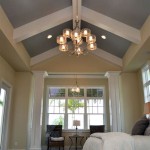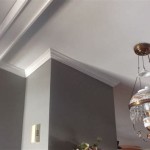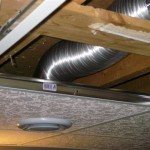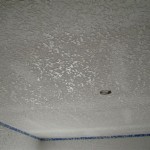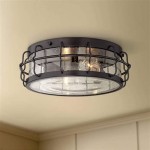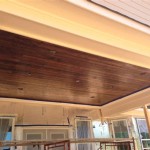Everything You Need to Know About Lights on Ceilings and Walls
Lighting plays a crucial role in interior design, influencing both the aesthetics and functionality of a space. Understanding the various types of ceiling and wall lights, their applications, and installation considerations is essential for creating a well-lit and inviting environment.
Types of Ceiling Lights
Ceiling lights serve as the primary source of illumination in most rooms. They come in various styles and configurations to suit different needs and preferences.
Flush Mount Lights: These fixtures sit flush against the ceiling, offering a clean and unobtrusive look. They are ideal for rooms with low ceilings or hallways where space is limited. Flush mount lights are available in a wide range of designs, from simple domes to decorative chandeliers.
Semi-Flush Mount Lights: Bridging the gap between flush mount and pendant lights, semi-flush mounts hang slightly down from the ceiling. They offer more visual interest than flush mounts while still being suitable for rooms with lower ceilings. This type is often chosen for bedrooms, dining rooms, and kitchens.
Pendant Lights: Suspended from the ceiling by a cord, chain, or rod, pendant lights make a statement and add a touch of elegance. They are available in various shapes, sizes, and materials, making them versatile options for a range of interiors. Pendant lights are often used over dining tables, kitchen islands, and in entryways.
Recessed Lights: Also known as can lights or downlights, recessed lights are installed directly into the ceiling, creating a seamless and minimalist look. They are ideal for general lighting and can be used to highlight specific areas or architectural features. Adjustable recessed lights allow for directed lighting, while fixed versions provide overall ambient illumination.
Track Lighting: Consisting of multiple light heads mounted on a single track, track lighting provides flexibility and directional control. It is often used in kitchens, art galleries, and retail spaces to highlight specific objects or areas.
Chandeliers: These elaborate fixtures typically feature multiple arms and decorative elements. Chandeliers add a touch of grandeur and sophistication to dining rooms, living rooms, and entryways. They are available in a wide range of styles, from traditional crystal chandeliers to modern minimalist designs.
Types of Wall Lights
Wall lights complement ceiling lights by providing focused illumination and adding layers of light to a room. They also serve as decorative elements, enhancing the overall aesthetic appeal of a space.
Sconces: These wall-mounted fixtures are available in various styles, from traditional candle-style sconces to modern geometric designs. They are often used in hallways, bathrooms, and bedrooms to provide ambient lighting and accentuate architectural features.
Picture Lights: Specifically designed to illuminate artwork, picture lights are mounted above or below a painting or photograph. They enhance the visual appeal of the artwork and create a focal point in the room.
Bathroom Vanity Lights: Installed above or flanking the bathroom mirror, vanity lights provide essential illumination for grooming tasks. They come in various styles and configurations to complement different bathroom designs.
Placement and Spacing of Lights
Careful consideration of light placement and spacing is crucial for achieving optimal illumination and creating the desired ambiance. The size of the room, ceiling height, and the intended use of the space should all be taken into account.
Choosing the Right Bulb
Light bulbs come in various types, each with its own characteristics and energy efficiency ratings. Consider factors such as color temperature, brightness (lumens), and lifespan when selecting bulbs for your ceiling and wall fixtures.
Installation Considerations
Proper installation is essential for ensuring the safety and functionality of ceiling and wall lights. Consult a qualified electrician for complex installations or if you are unsure about any aspect of the process. Always follow the manufacturer's instructions and adhere to local building codes.
Energy Efficiency
Energy-efficient lighting options can significantly reduce energy consumption and lower utility bills. Consider using LED bulbs, which offer longer lifespans and consume less energy than traditional incandescent bulbs.
Maintenance and Cleaning
Regular cleaning and maintenance are essential for keeping your ceiling and wall lights in optimal condition. Dust fixtures regularly and replace bulbs as needed. Always disconnect the power supply before cleaning or performing any maintenance tasks.

Everything You Need To Know About Ambient Lighting For Your Home Beautiful Homes

Top 3 Ideas To Light Up Your Ceiling Saint Gobain Gyproc

Ceiling Light Design Ideas For Your House

Ceiling Light Designs For Your Home Decorative Lights

9 Types Of False Ceiling Light Designs To Glam Up Your Home

Garage Lighting 101 Everything You Need To Know Designs Of St Louis

False Ceiling Light Types For Your Home Design Cafe

False Ceiling Light Options For Your Living Room Design Cafe

Beautiful And Easy To Install Profile Light Ceiling Designs

Choosing Between Wall Lights Vs Ceiling Seascape Lamps
Related Posts


